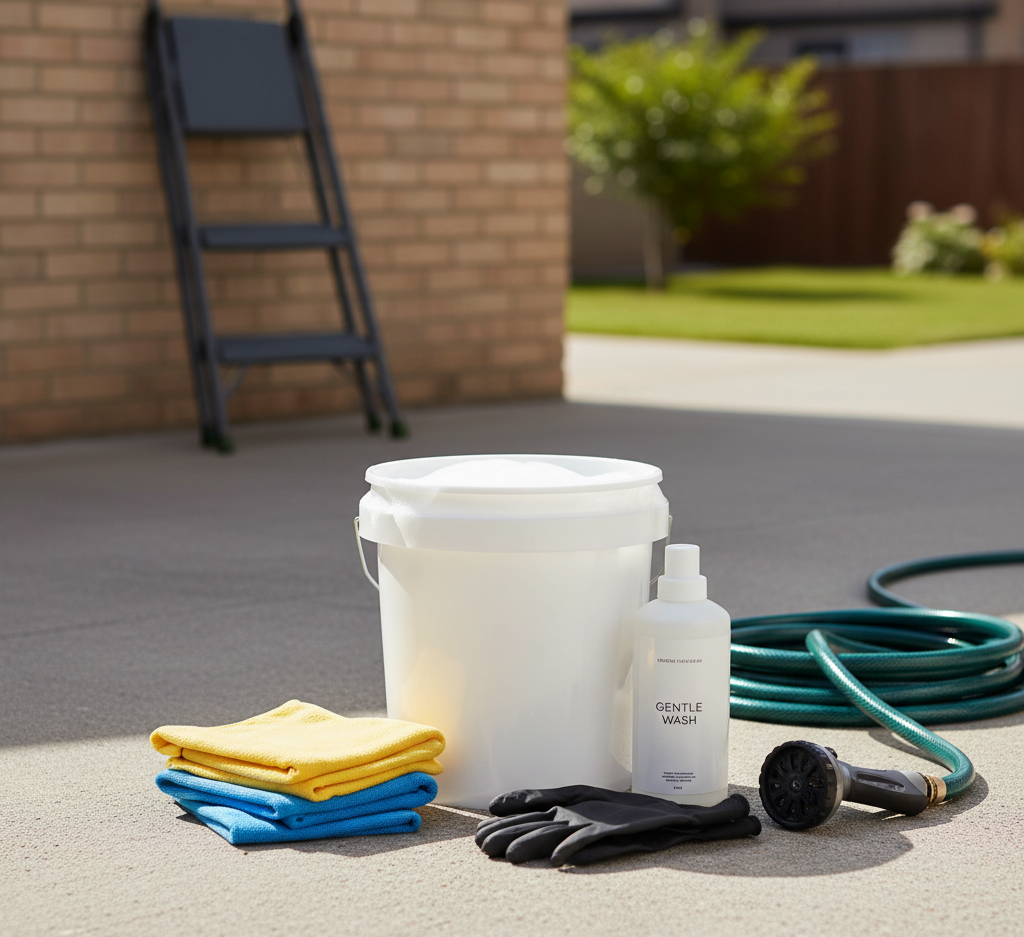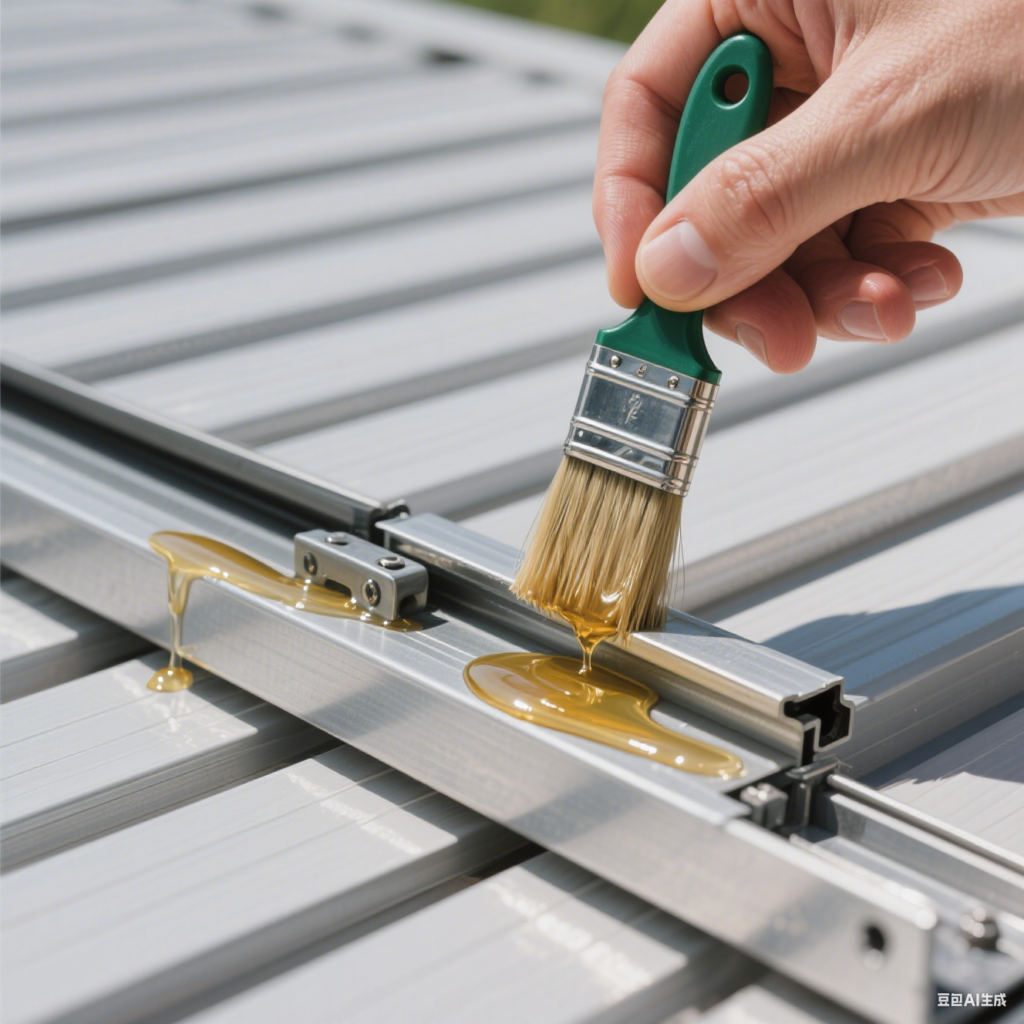The Ultimate Pergola Maintenance Methods: A Professional’s Guide
Protecting Your Investment
A high-quality aluminum pergola is a significant investment in your home’s outdoor lifestyle. To ensure it remains a stunning and functional centerpiece for years to come, employing the right pergola maintenance methods is not just a recommendation—it’s essential.
A Professional Framework
This guide provides a complete, professional framework, moving beyond simple cleaning to cover deep care, troubleshooting, and seasonal preparation.
Maintenance Frequency: How Often Should You Clean Your Pergola?
For optimal longevity and appearance, your maintenance schedule should be tiered. We recommend a three-level approach:
Routine Inspection (Once a month or after storms)
A quick visual check to clear any large debris like fallen branches or leaves from the louvers.
Seasonal Deep Cleaning (2 times a year)
A thorough cleaning performed in the spring (to prepare for the season of use) and again in the late autumn (to prepare for winter). The steps below detail this core process.
Professional Check-up (Every 3-5 years)
For electric pergolas, have a qualified technician inspect the motor and electrical components. For all pergolas, check that all structural bolts and fasteners are secure.
Seasonal Deep Cleaning for Aluminum Pergolas
This is the most important part of your pergola maintenance routine. Follow these steps for a professional-level result.
🧰
What You’ll Need

- A pH-neutral, non-corrosive detergent
- 2-3 clean, soft microfiber cloths (one for washing, one for drying)
- A pair of waterproof gloves
- A garden hose with a multi-function, adjustable-pressure nozzle
- A sturdy household ladder
Step-by-Step Cleaning Process
1
Preparation & Gutter Cleaning
First, open the pergola louvers to the 90-degree vertical position to ensure maximum access. Wearing gloves, climb the ladder and manually scoop out any leaves or sediment from the integrated gutter channels inside the beams. Then, using a medium-pressure jet setting on your hose, flush the channels until you confirm water flows freely from the drainage ports at the base of the columns. The goal is to ensure the internal drainage is completely clear.
2
Washing the Frame and Louvers
In a bucket of warm water (approx. 100°F / 40°C), mix in a neutral detergent at roughly a 50:1 ratio. Dip a microfiber cloth in the solution and wring it out to prevent excess dripping. Working in one direction, methodically wipe down all aluminum surfaces, including each louver, the beams, and the columns.
3
Rinsing Away Residue
Switch your hose nozzle to a low-pressure, wide-spray pattern (like a “shower” or “mist” setting). From the top down, thoroughly rinse the entire pergola. The purpose of this step is to completely remove any soap residue that could otherwise leave a film.
4
Drying (The Critical Final Step)
This is the most crucial step to prevent a new problem: immediately use a separate, dry microfiber towel to wipe down and blot dry all surfaces. This action prevents minerals in the water from leaving behind visible water spots as it evaporates, which is especially important on dark-colored coatings.
Tackling the Three “Stubborn Ailments”
Routine cleaning handles 90% of maintenance, but some “stubborn ailments” require special treatment. Below are the expert-level thought processes and techniques for these issues. They not only solve the problem but, more importantly, prevent you from making costly mistakes during the process.
How to Handle Stubborn Stains (e.g., Bird Droppings, Tree Sap)
When faced with stubborn stains like dried bird droppings or sticky tree sap, the first instinct is often to scrub harder. This is the most common mistake and can easily lead to scratches in the coating. The correct philosophy is to soften, not fight.
First, take a microfiber cloth soaked in your 100°F (40°C) warm water and neutral detergent solution. Cover the stain with the damp cloth, allowing the moisture and detergent enough time to break it down. Be patient and wait for 10 to 15 minutes; let the chemical and physical processes do the work. When the time is up, gently lift the cloth. You will find that most of the stain can now be easily lifted off, not scrubbed away. For any residue, simply wipe gently with a clean section of the cloth.
Tip pro profesionály: If you decide to use any commercial cleaner (such as an automotive bug and tar remover), always test it in an inconspicuous area first (e.g., on the back of a column near the ground). Wait a few minutes, wipe it dry, and observe if there is any discoloration or loss of sheen to ensure it is fully compatible with your pergola’s coating.
How to Repair Minor Scratches
A scratch is more than a cosmetic issue; it is a breach in the coating’s protection, a starting point for future oxidation and corrosion, especially in damp or rainy climates. Therefore, addressing it early is critical.
Immediately contact your pergola manufacturer with your order number or product model to purchase a dedicated touch-up paint pen with the exact color code for your unit. Do not try to use generic metal paint, as matching the specific color and gloss level is nearly impossible. Proper care of the finish is essential to the longevity of our premium aluminum pergolas.
The repair process requires the same precision as a work of art:
Krok 1: Ensure the scratched area is absolutely clean and dry.
Krok 2: Like applying nail polish, use the pen’s fine brush tip to fill the groove of the scratch with a light, thin layer. The key is to “fill,” not “paint,” avoiding overflow onto the surrounding intact surface.
Krok 3: Allow it to dry and cure completely for at least 24 hours.
How to Identify and Treat Surface Oxidation
This is potentially the most serious issue for aluminum products with long-term outdoor exposure.
How to Identify It:
If you touch the aluminum surface, especially in corners or edges where water might pool, and feel a white, chalky, powder-like substance that leaves the finish looking dull after being wiped away, this is usually an early sign of oxidation.
How to Treat Minor Oxidation:
For this early-stage powdery oxidation, you can use a solution of 1-part white vinegar to 1-part water. Apply with a soft cloth, let it sit for no more than 5 minutes, then rinse thoroughly with clean water and wipe it completely dry. The mild acid in the vinegar neutralizes the alkaline aluminum oxide.
When to Call a Professional:
If the oxidation has already caused the coating to bubble, crack, or peel away in flakes, stop any DIY attempts immediately and contact a professional metal surface restoration company.
Tip pro profesionály: For areas prone to dampness and oxidation, after cleaning and treating them as described above, you can apply a very thin layer of high-quality car wax (e.g., Carnauba wax) with a clean cloth. This provides an additional hydrophobic protective layer that will significantly slow down the rate of future oxidation.
Drivetrain Care: Maintaining the Core Mechanism
For Manual Pergolas:
Once a year after cleaning, apply a quality silicone-based lubricant spray for 1-2 seconds into the gearbox mechanism where your hand crank attaches. Operate the louvers a few times to distribute the lubricant evenly.
For Electric Pergolas:
Maintenance is primarily observational. Periodically check the remote control batteries. Visually inspect exposed wiring for any signs of wear or damage. Most importantly, listen to the motor during operation; any new grinding or straining sounds warrant a call to your installer for a professional inspection.
Winter is Coming: How to Winterize Your Pergola
Perform one final deep cleaning using the steps above.
Double-check that all gutter channels and drain holes are completely clear of debris.
Position the louvers in the fully open (vertical) position. This is critical to prevent heavy snow from accumulating and exceeding the structure’s snow load rating.
For electric models, turn off the power supply at the circuit breaker to protect the motor and electronics from winter power surges.
Critical Mistakes to Avoid
NEVER use a high-pressure washer. It can force water into sensitive joints and electrical components.
AVOID any abrasive cleaners, bleach-based products, or harsh chemicals.
DO NOT use rough tools like steel wool, scouring pads, or stiff-bristled brushes.



